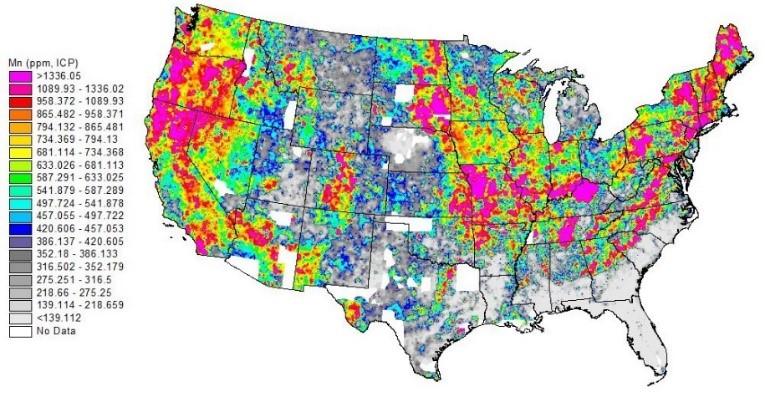Why is Manganese in Drinking Water a Problem?
October 2nd, 2019
Manganese is a naturally-occurring mineral found in soil, groundwater, and surface water. It is considered a toxic trace element, a naturally occurring metal that is essential for humans to survive, while also toxic when concentrations in the body are too high. It is naturally prevalent throughout the United States with higher concentrations in the Northeast. A focus on manganese in drinking water for both human health and nuisance effects has led to the development of methods to reduce manganese through treatment.
New Data Shows Links to Disabilities in Children
Though humans need some level of manganese in their diet, excessive concentrations of manganese have been shown to cause neurological impacts. Studies showed links between cognitive processes and manganese exposure from various routes, including drinking water, and exposure limits related to age and gender. It was found that excessive manganese in children’s diet was linked to learning disabilities while recognizing that manganese is present in formula, cereals, vegetables, fruits as well as some drinking waters. Infants and children younger than 12 months old are potentially most susceptible to excess manganese exposure because of their developing neurological and gastrointestinal systems. Infants appear to absorb more manganese than older age children and adults, but excrete less.
Other Impacts
Manganese has long been known to cause nuisance and aesthetic issues in drinking water, including staining laundry and water use fixtures, causing metallic or vinyl taste, clogging water and well filters, and causing objectionable color. As water interacts with the manganese in the soil, the manganese reduces to a soluble form. When exposed to the air, manganese oxide precipitates out of the water, causing the aesthetic issues.
Manganese deposition can cause serious problems to public and private water suppliers. When dissolved manganese is in pipes it has a tendency to precipitate as scale at a slow but continuous rate. Scale builds up and eventually causes blockages in pipes and orifices. Taste and discoloration of drinking water increases resulting from this process. Wells are also susceptible. Manganese scale can clog well screens resulting in slower rates of withdrawal.

Pipe with Build Up Manganese Scale
If you would like more information about manganese or to discuss how manganese may impact your drinking water supply, please contact Michael Ohl, P.E., CFM at 800.725.2550 x359 or [email protected]






